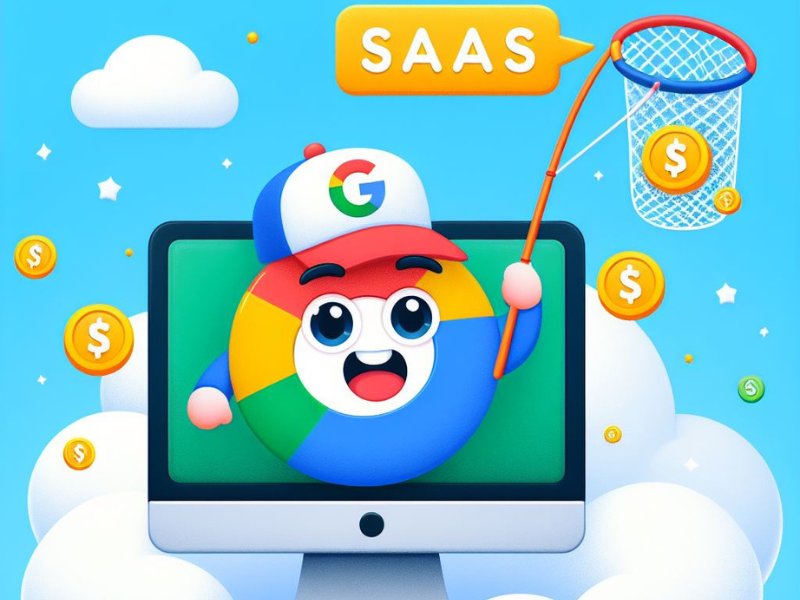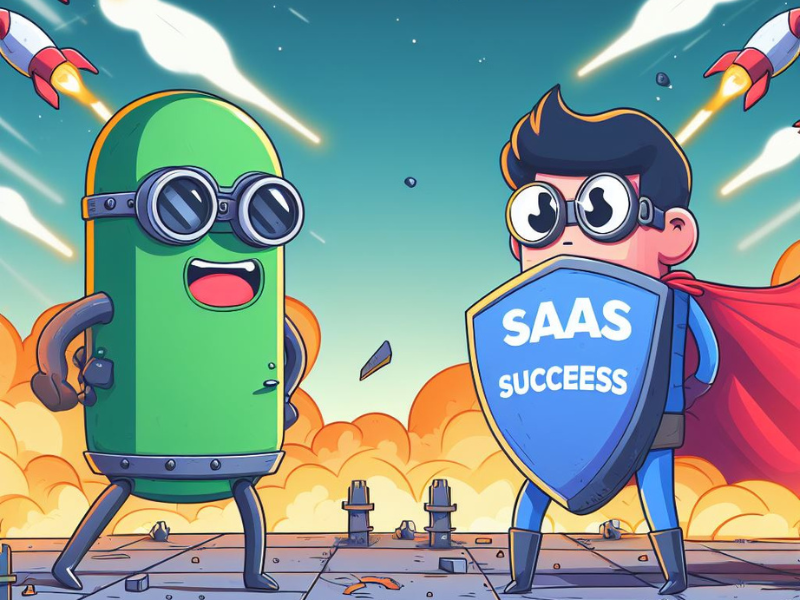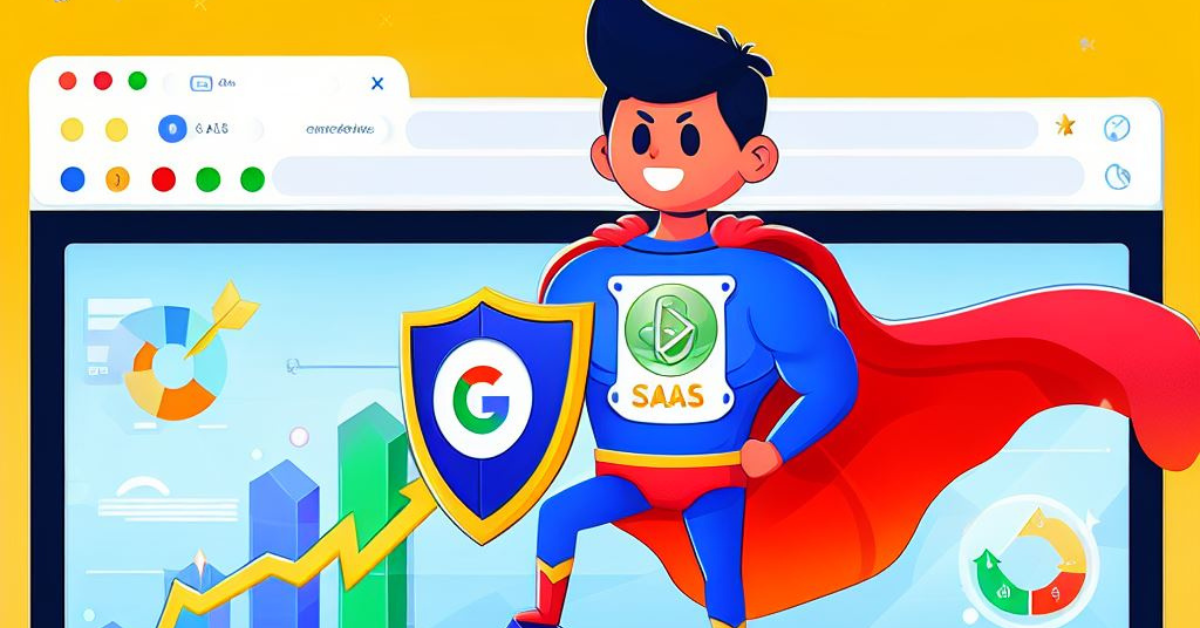Introduction
In the dynamic world of digital marketing, selecting the right channels for reaching your target audience can significantly impact the success of your Software as a Service (SaaS) business. Google Ads for SaaS has emerged as a potent tool, capable of delivering impressive results in terms of lead generation, brand awareness, and overall growth. Whether you’re considering running Google Ads in-house or partnering with a specialized SaaS Google Ads company, this comprehensive guide will provide you with the strategies and insights needed to thrive in the competitive landscape.
Why Google Ads for SaaS?

Before we delve into the strategies and tactics for achieving success with Google Ads in the SaaS industry, it’s essential to understand the unique dynamics that set SaaS PPC (Pay-Per-Click) advertising apart from B2C (Business-to-Consumer) and eCommerce PPC campaigns.
Differentiators in SaaS PPC
- Lead Volume Discrepancy: One significant difference lies in lead volumes. In B2C and eCommerce, the audience is typically more extensive, leading to higher lead volumes within a given timeframe. In contrast, SaaS PPC often yields fewer leads due to the narrower target audience in the B2B space. Setting realistic lead volume expectations is crucial when dealing with SaaS clients.
- Lengthier Sales Cycles: B2B sales cycles tend to be longer than those in B2C and eCommerce. Multiple stakeholders often influence purchase decisions, and contracts may extend over extended durations. Therefore, patience is essential when navigating the SaaS sales journey.
Strategies for Success with Google Ads for SaaS

Now that we’ve highlighted the unique aspects of SaaS PPC, let’s explore the strategies that can help you create effective Google Ads campaigns for your SaaS business:
1. Thorough Industry Research

Conducting comprehensive industry research is an indispensable foundation for the efficacy of any Google Ads campaign. It is crucial to invest time in gaining a deep understanding of the specific nuances, trends, and dynamics of your particular industry. By doing so, you’ll be well-equipped to navigate the intricacies of industry-specific terminology and concepts, which are essential to creating compelling and relevant ad content.
Another critical aspect of a successful Google Ads strategy is ensuring that your entire team is well-versed in the industry jargon. This shared knowledge will facilitate more effective communication and collaboration within your team, leading to better campaign execution.
Moreover, thorough keyword research is paramount in identifying the precise terms and phrases that resonate with your target audience. By delving into the search behaviors and preferences of your potential customers, you can pinpoint the keywords that are most likely to trigger their interest and engagement. This knowledge allows you to tailor your ad content to better align with the needs and expectations of your audience, increasing the likelihood of campaign success.
2. Implement Smart Naming Conventions
While naming conventions may not directly impact campaign performance, they play a crucial role in efficient account navigation and understanding campaign structure. Utilize recognizable names for different aspects of your campaign, such as audience targeting via ad groups. This simplifies campaign management and reduces confusion.
3. Exercise Patience in Funnel Strategy
SaaS sales cycles are typically longer, requiring patience and meticulous tracking of lead progress within the sales funnel. Tools like Google Ads’ attribution time lag report, Google Analytics in Conversions, multi-channel funnels, and time lag reports are invaluable for understanding a lead’s position in the funnel.
4. Observe Your Campaigns by Adding Audiences
Leverage “in-market audiences” to target potential leads in the research phase of their buying journey. In-market audiences are ideal for connecting with buyers closer to making a decision. Incorporate these audiences into your campaign settings for maximum impact.
5. Targeting Intent Segments + In-Market
In-market segments and custom intent audiences can boost your conversion rate significantly. Although they may lead to higher click-through rates (CTR), they attract audiences closer to conversion. Utilize these targeting methods to optimize your campaign’s conversion potential.
6. Start with a Manual Bidding Strategy
For new campaigns, manual bidding is recommended to retain control over your bids, especially when traffic quality is uncertain. Monitor keyword dimensions, including audience, device, gender, location, time of day, day of the week, age, and household income if bid adjustments are considered. Experiment with automated bidding separately to gauge its effectiveness without risking profits.
7. Optimize Landing Page Design

The quality of your landing page significantly influences campaign success. A well-designed landing page, with fast loading times, high-quality content, clear instructions, and a prominent call-to-action (CTA), is essential for guiding users toward conversion. Prioritize quality when designing your landing page.
8. Tackle Keyword Competition
Keyword competition is common in Google Ads. If you encounter difficulties bidding on desired keywords, consider slight modifications or explore similar alternatives. Avoid using brand names as keywords to prevent account penalties.
9. Leverage B2B Remarketing Campaigns
B2B remarketing campaigns are an underutilized strategy. They enable you to target leads who have interacted with your brand but have not converted. B2B remarketing campaigns can:
- Tailor campaigns to engage leads at different stages.
- Build brand awareness, even if immediate conversion isn’t the goal.
- Offer cost-effective advertising due to lower click costs for remarketed audiences.
Conclusion
In conclusion, it is evident that Google Ads can serve as a highly lucrative channel for promoting Software as a Service (SaaS) products when approached strategically. The key to realizing the full potential of Google Ads for SaaS lies in meticulous planning and execution. To maximize your success in this advertising realm, you should place a premium on several core principles.
First and foremost, comprehensive industry research is fundamental. Gaining a deep understanding of the specific dynamics and trends within your SaaS niche is crucial for crafting ads that resonate with your target audience. This research should extend to understanding and adopting industry-specific terminology and concepts, which can significantly enhance the relevance and impact of your ad campaigns.
Secondly, continuous monitoring of key metrics is essential. Regularly analyzing the performance of your Google Ads allows you to identify what’s working and what isn’t, enabling you to fine-tune your campaigns for optimal results. Utilize the data provided by Google Ads to track conversions, click-through rates, and other relevant KPIs, and adjust your strategies accordingly.
Additionally, it’s vital to leverage Google’s advanced features and tools to your advantage. Features like retargeting, audience targeting, and dynamic ads can help you fine-tune your campaigns and reach potential customers with a high propensity to convert.
By diligently adhering to these strategies and best practices, your SaaS Google Ads campaigns have the potential to deliver exceptional results. With the right mix of industry knowledge, performance analysis, and leveraging Google’s capabilities, you can drive substantial growth for your software-as-a-service business and unlock the full revenue-generating potential of Google Ads in the SaaS sector.
